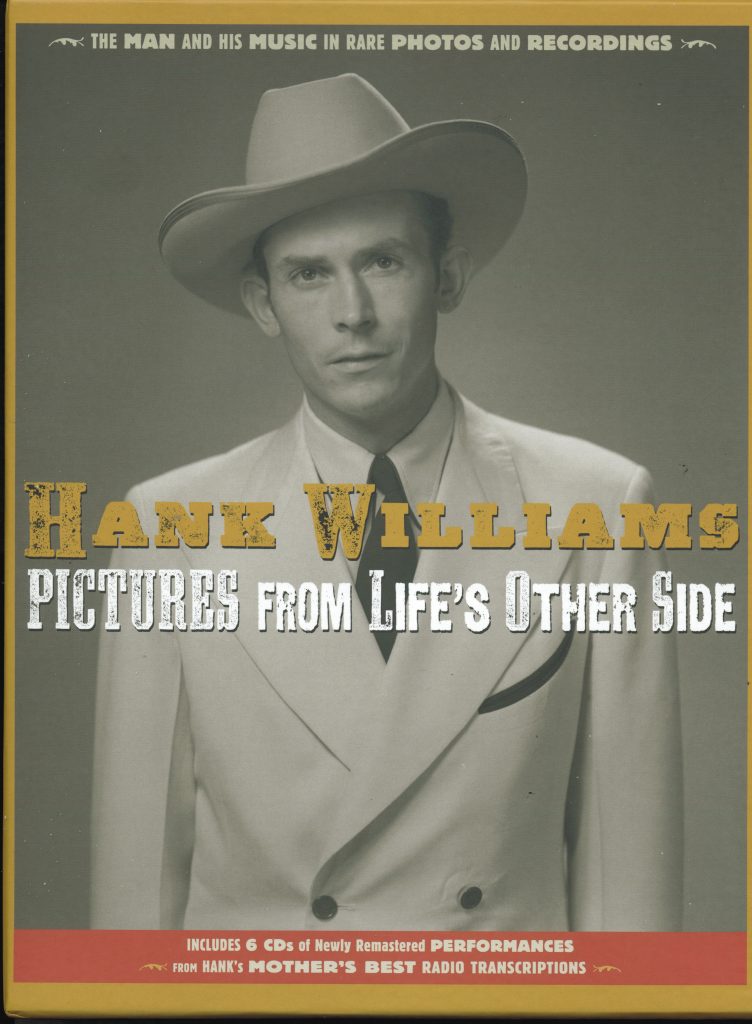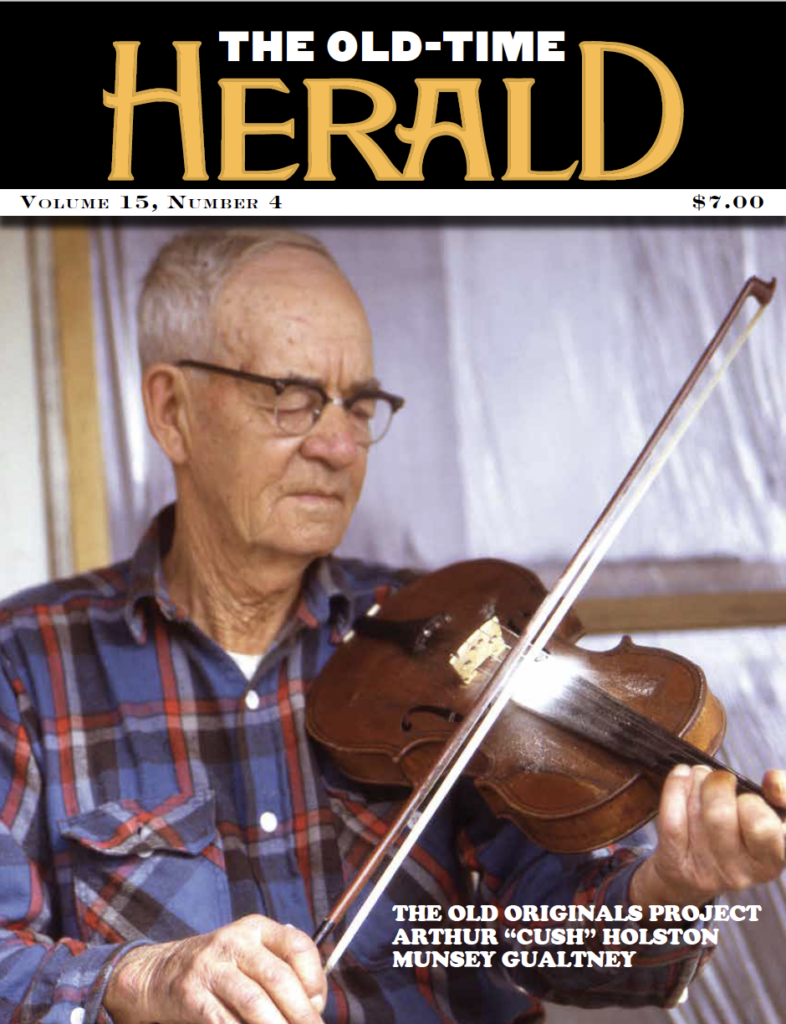
Hank Williams’ Mother’s Best Flour Show radio transcriptions were long the stuff of legend, reportedly snatched from the jaws of a dumpster by Grand Ole Opry photographer Les Leverett circa 1965. “WSM radio was purging its library of unusable material,” Jett Williams (Hank’s daughter) wrote in the liner notes to Hank Williams: The Unreleased Recordings. “Included were some 72 shows featuring Hank Williams [recorded in 1951]…WSM got rid of them because they knew, legally, they could not do anything more with them.” Neither could Leverett, so he eventually gave the acetates to Williams and her attorney husband, Keith Adkinson. But some tracks had leaked and were bootlegged, so, like much in the posthumous Hank Williams saga, protracted litigation followed before any authorized version of the Mother’s Best radio shows saw release.
The tap finally opened in 2008 with the three-CD set Hank Williams: The Unreleased Recordings (Time-Life). “Greatest Discovery Ever!” proclaimed a sticker on the shrinkwrap of the hardback book-like set. “Top quality, ultra-rare songs from the king of country music made available for the 1st time!” Inside were several previously unpublished photos of Hank as part of a 40-page booklet that offered informative notes on the songs and Williams’ world by reissue producer and Williams biographer Colin Escott. The 54 songs included unheard versions of Williams hits as well as a plethora of material he never recorded commercially, including moving versions of songs he learned in his Depression-era boyhood: “On Top of Old Smoky” had a spoken introduction by Hank acknowledging the Weavers’ then-recent hit but adding that he learned it from the singing of his grandmother!
The next year brought Hank Williams Revealed: The Unreleased Recordings, another 3-CD Time-Life set with rare photos and a 40-page booklet with thorough notes by Escott, plus some differences: there was a thematic bent (CD 1 offered The Hits…Like Never Before, Southern Harmony graced CD 2 in 11 religious songs, and Luke the Drifter, Hank’s sometimes piously, other-times humorously moralizing alter ego, appeared on CD 3) along with three complete Mother’s Best Shows, heard for the first time since they aired in 1951.
In 2010, Time-Life dropped the Mother’s Best motherlode, The Complete Mother’s Best Recordings…Plus! This 15-CD set included the entirety of each Mother’s Best show, along with a 1952 audition for an Aunt Jemima show that never aired and an unlikely venereal disease PSA with Hank contributing narration and song. There was also a 41-minute DVD, Hank Williams: The Untold Stories, with Jett Williams discussing the Mother’s Best shows with Hank’s steel guitarist and close friend Don Helms, touring partner and buddy Big Bill Lister (Hank wrote “There’s A Tear in My Beer” for him), and WSM engineer Glenn Snoddy. The 108-page hardbound book that accompanied the set offered more rare photos and extensive commentary on the songs and performances by reissue producer Escott. There was even a foldout map tracing Hank’s 1951 touring itinerary: that was his year of peak popularity, and the grueling schedule contributed to his early demise. (He and his Drifting Cowboys would record five of the 15-minute radio shows in a day when in Nashville, a week’s worth for broadcast.) This frankly amazing set was packaged in what looked like a wooden cathedral-style 1930s radio with a knob on the front that, when switched on, played a vintage WSM jingle!
Frankly, there’s just no topping that. But now, a decade later, it’s BMG’s turn to resurrect the Mother’s Best material on Hank Williams: Pictures from Life’s Other Side. There are six CDs offering 144 tracks and over seven hours of music. What’s missing? These aren’t complete shows, so the first CD opens with a typical show intro, but otherwise the flour commercials are gone. Arguably no one may miss them, or Audrey Williams’ vocal solos, though the same may not be said of instrumentals by fiddler Jerry Rivers or steel guitarist Don Helms. But part of what’s remarkable about the Mother’s Best shows shines through: enough of Hank’s banter with announcer Louie Buck and his band members to reflect a relaxed, affable, and humorous star, a surprising contrast to the tragic image that trailed in the wake of his early death. (He was just 29.) The edited shows are faithfully sequenced as recorded from January to October or November, 1951, so these may be called the essential if not the complete Mother’s Best recordings. Newly remastered, they sound great, though the Time-Life sets did, too.
The Mother’s Best CDs nestle in the front and back covers of a 272-page hardback book housed in a handsome slipcase. The coffee table book is arguably the star attraction, with over 200 photos of Hank, many previously unpublished, including some in color. One of the most startling images is a color photo of Hank in his hospital bed, Audrey by his side, after the spinal surgery that did not relieve the pain that led to excessive self medication and his downward spiral in 1952. The book is laid out and captioned in a way to tells Hank’s story in pictures, everything from blurry snapshots to crisp studio portraits. (Credits are given Colin Escott and Scott B. Bomar, with additional content and photo research by Ken Campanile.) Enough photos will be new to longtime Hank enthusiasts to make this remarkable collection of images the reason to get Pictures from Life’s Other Side. Naturally many of them are of Hank signing autographs and being a hail-fellow-well-met star, albeit one with an occasional glint in his eye that betrays fame was not completely to his liking.
Escott’s essay on the Mother’s Best material is fairly brief and general here, so anyone eager to know specifics about such vintage weepers as “The Blind Child’s Prayer” (Hank introduced it as one of the first songs he learned) or the many pre-War heart songs and sacred songs Hank recorded for these radio shows that he never cut commercially would do well to seek out the Time-Life sets. The same can be said of songs by his contemporaries (the Bailes Brothers, Moon Mullican, etc.) sung on the Mother’s Best shows that offer insight into Hank’s musical tastes. Historical context takes a hit here, but the telling of Hank’s tale in images is deeply compelling on its own terms.

Leave a Reply